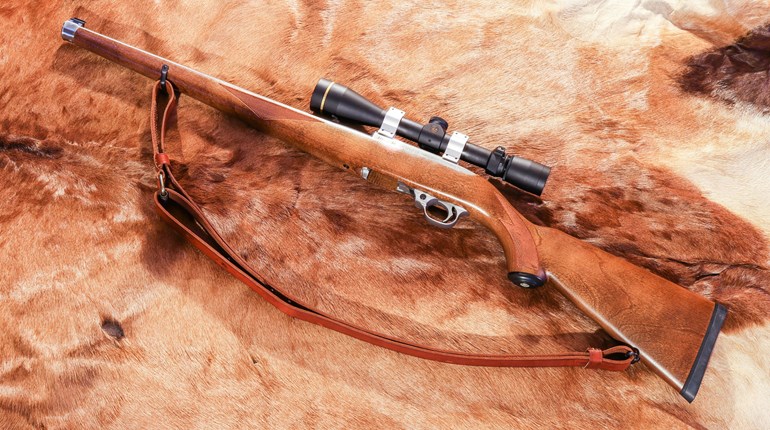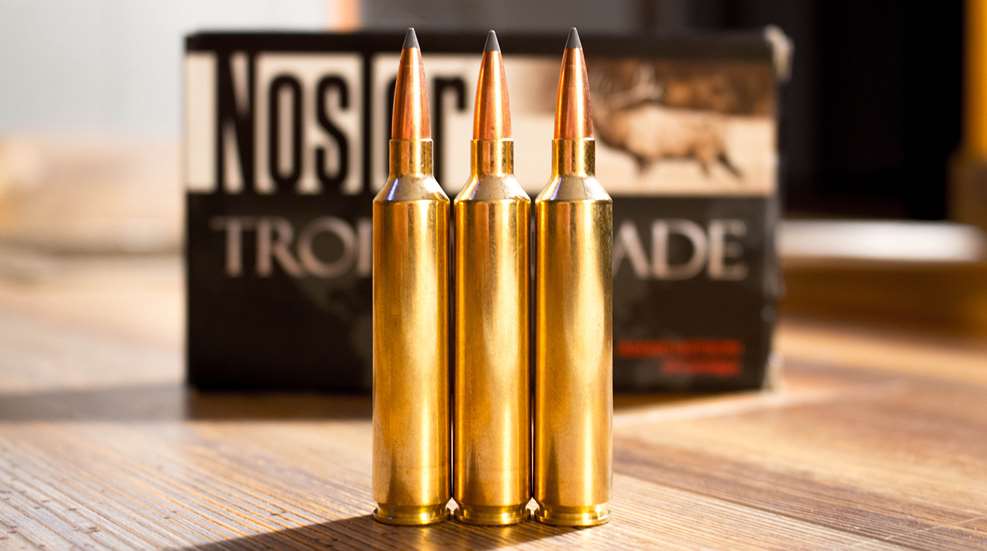
Each year in January, the shooting industry gathers in Las Vegas for the Shooting, Hunting, and Outdoor Trade Show, better known as SHOT Show. Many new products are released there each year, but the January 2014 show sticks in my mind for a couple of reasons: first, it was the first time I’d ever attended the show—can you say kid in a candy store?—and second, the 26 Nosler was all the buzz. It was on the giant banners around the show, it was advertized in all the flyers and gun-related news pubs; hell it was even on the little “Do Not Disturb” placard you hang on your hotel door knob.
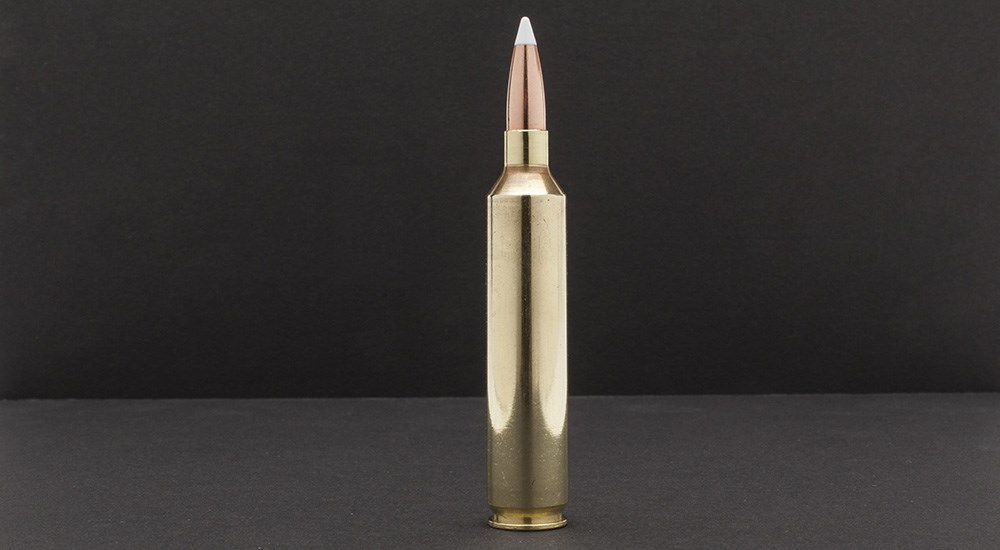
The 26 Nosler was the first of the Nosler proprietary cartridges, and it remains a flat-shooting, hard-hitting choice for hunting open country. Being a 6.5mm cartridge, it will use the high ballistic coefficient (BC) projectiles which retain their energy downrange, resist the effects of a crosswind, and offer a flat trajectory. Based on a shortened .300 Remington Ultra Magnum—which is in turn derived from the .404 Jeffery with a sharpened shoulder and minimal body taper—the 26 Nosler is designed to function in a long-action receiver.
Like so many of the new cartridges, the 26 Nosler is a rimless design, which headspaces off the steep 35-degree shoulder. It delivers magnum performance despite the lack of that word in its title, using a 0.534-inch case head, a diameter closer to that of the H&H family rather than the slightly larger diameter of the Jeffery case, just as the parent .300 RUM did. This allows the common belted magnum bolt face to be employed, while still giving a solid rim for extraction. At the shoulder, the body diameter is still 0.528 inches, giving just about the least amount of taper possible while still offering ease of extraction. The case measures 2.590 inches, with an overall cartridge length of 3.340 inches. The 26 Nosler has a neck length measuring 0.259 inches; while this is slightly less than the usually desired one-caliber in length, I’ve never had an issue with neck tension.
The 26 Nosler is designed to use the standard 1:9-inch twist rate, which will allow the standard gamut of 6.5mm bullets to be loaded, though in the copper-alloy choices bullet weight will top out at about 130 grains before things become unstable. That big case offers plenty of room for powder, and the 26 Nosler is a speed demon for sure. At the time of its release, the 26 Nosler was touted as the fastest and most powerful of the 6.5mm cartridges, launching a 140-grain bullet at a muzzle velocity of 3300 fps. It has since been unseated by the 6.5-300 Weatherby Magnum, which will better that muzzle velocity by 100 fps, but at the cost of a magnum receiver, and a noticeable increase in recoil. Nonetheless, the 26 Nosler is seriously fast, and overheating the barrel of your rifle is a definite reality. I don’t feel this cartridge makes a good choice for a high-volume target situation, nor even extended strings of five-shot groups, as you’re gonna heat things up fast.
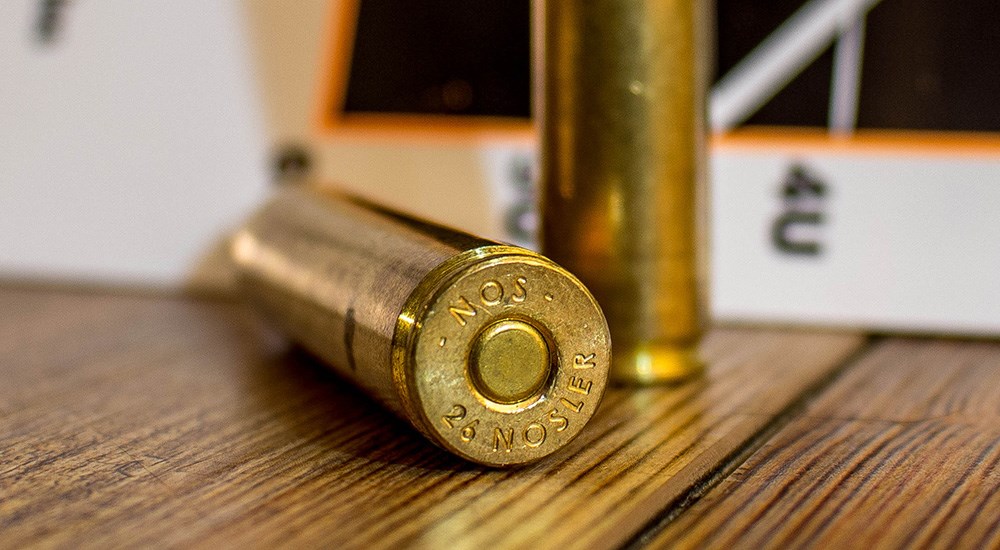
The 129-grain bullets are launched at 3400 fps, and the 150s are leaving the muzzle at 3200 fps. If you are hunting with the 26 Nosler at long ranges, where the bullets get a chance to slow down, a standard bullet with a good jacket will fit the bill. But because of the reality of close-in shots, where impact velocities are high, the majority of the Nosler factory ammunition designed for hunting is loaded with their toughest projectiles. The 120-grain Expansion Tip, the 140-grain AccuBond, and the 129-, 142- and 150-grain AccuBond Long Range projectiles are all offered. The first is a copper-alloy monometal (hence the lighter weight), and the other two are bonded-core jacketed bullets which are tough enough to withstand high velocity impacts, yet will still offer reliable expansion at lower (read long range) velocities. Yes, Nosler does offer the 140-grain Ballistic Tip in the 26 Nosler, but as much as I love that bullet in standard velocity cartridges, things can get messy at magnum velocities, especially with one of the fastest cartridges in the 6.5mm bore diameter.
Looking at the trajectory of the 140-grain AccuBond bullet, at a muzzle velocity of 3300 fps, and using a 200-yard zero, you’ll see that bullet drop 5.2 inches at 300 yards, 15 inches at 400 yards and just 30 inches at 500 yards. Even at 500 yards that AccuBond is still moving at just under 2400 fps, carrying 1,760 ft.-lbs. of energy. Mind you, the AccuBond has a lesser BC value than does the AccuBond Long Range, which will give a slightly better performance. But even with the less shapely bullet, you’ve got serious performance. With the 140- to 150-grain premium bullets, the 26 Nosler is a sound choice for any deer, elk, moose, black bear or caribou. It is a good gun for any of the sheep family, including aoudad, though I’d want the heaviest bullets for the latter.
If I were to take issue with the 26 Nosler, it would be that ammunition is only available from Nosler themselves, and that has been spotty of late. The effects of millions of new shooters joining our ranks, plus the supply chain issues still affecting us from the COVID-19 shutdowns have made things all the more difficult. So, unless you head to a boutique ammo company like Choice Ammunition, your choices are within the proprietary offerings.
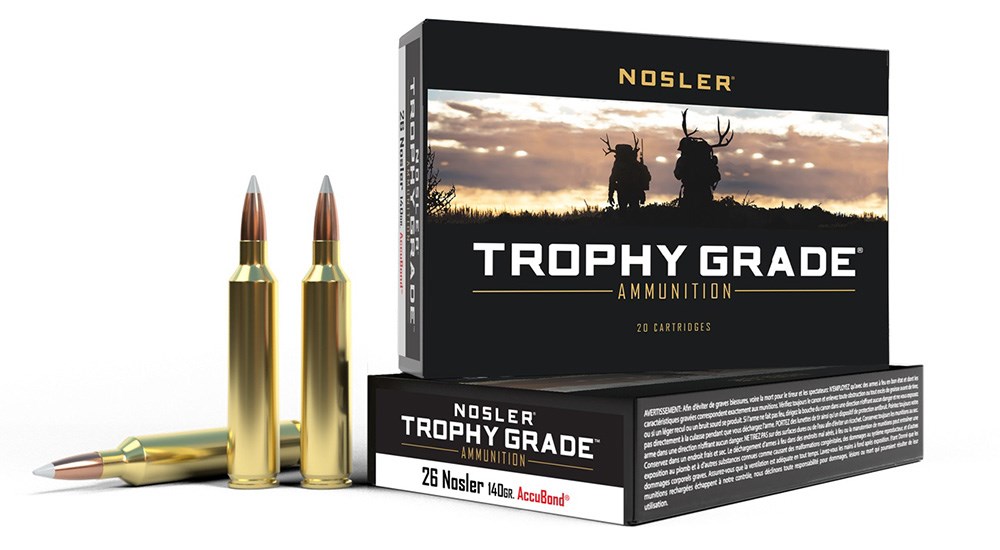
Handloading the 26 Nosler makes all sorts of sense, as Nosler offers really good component brass cases for their cartridge, and there are all sorts of excellent 6.5mm component projectiles to choose from. With a case capacity of 93 grains of water, the 26 Nosler can hold a bunch of powder, and you’ll want to choose from the slowest burning powders to get the most out of the case. Hodgdon’s H50BMG, Alliant’s Reloder 33 and Reloder 50, and Norma’s 217 are all good choices; be sure you spark that big powder column with a large rifle magnum primer.
Is the 26 Nosler the best choice for a northeast woods rifle? Well, there might be better tools for that job, but if I were spending the majority of my time on the plains, chasing bull elk through the canyons of the west, or trying to fill the sheep tag of a lifetime, the 26 Nosler gives a definite advantage, not just in trajectory, but in minimizing the effects of wind deflection, as well as retaining energy. It may not be exactly cheap to shoot—ammunition runs between $100 and $150 per box of 20, depending on bullet choice—but when you’ve scrimped and saved for that elusive tag or hunt, that part of the equation may seem the most affordable. The 26 Nosler is the smallest bore of the long-action Nosler cartridges, and while the 27, 28 and 30 Nosler might be a bit more flexible, especially on larger game animals, the 26 certainly brings the benefits of the 6.5mm bore diameter quickly to light.
Looking for previous installments of our "Behind the Bullet" series? We've got you covered.
• 6mm Remington
• .270 Winchester Short Magnum
• 360 Buckhammer
• 30 Nosler
• 7-30 Waters
• .370 Sako Magnum
• .17 HMR
• 6.5 Weatherby RPM
• .327 Federal Magnum
• .450 Bushmaster
• 7mm PRC
• .275 Rigby
• .340 Weatherby Magnum
• .416 Ruger
• 27 Nosler
• .257 Roberts
• 7mm Weatherby Magnum
• .300 PRC
• .350 Rigby Magnum
• .450 Nitro Express
• .17 Hornet
• 7mm STW
• 6.8 Western
• .375 Ruger
• .223 Remington
• 6.5x55 Swedish
• .416 Remington Magnum
• .300 Winchester Short Magnum
• 28 Nosler
• 6.5 PRC
• .22 WMR
• .458 Winchester Magnum
• .22 Hornet
• .280 Ackley Improved
• .240 Weatherby Magnum
• .458 Lott
• .264 Winchester Magnum
• .348 Winchester
• 33 Nosler
• .260 Remington
• .30-30 Winchester
• .416 Rigby
• .358 Norma Magnum
• .22 LR
• 7mm-08 Remington
• 8mm Remington Magnum
• .338 Federal
• .224 Valkyrie
• .338-06 A-Square
• 9.3x62mm Mauser
• .257 Weatherby Magnum
• .45-70 Government
• .300 H&H Magnum
• .25-06 Remington
• .30-06 Springfield
• 6.5 Creedmoor
• .300 Remington Ultra Magnum
• 7mm Remington Magnum
• .470 Nitro Express
• .280 Remington
• .300 Winchester Magnum
• .270 Winchester
• .222 Remington
• .45 ACP
• .404 Jeffery
• .44 Remington Magnum
• .41 Remington Magnum
• .243 Winchester
• .338 Winchester Magnum
• .357 S&W Magnum
• 6.5-284 Norma
• 8x57 Mauser
• .38 Smith & Wesson Special
• 7x57mm Mauser
• 9mm Luger
• .35 Whelen
• .454 Casull
• .375 H&H Magnum
• .45 Colt
• .22-250 Remington
• 10mm Auto
• .308 Winchester














